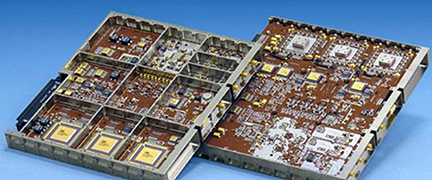
NASA’s climate mission PACE is extending and improving NASA's more than 20-year record of satellite observations of global ocean biology, aerosols (tiny particles suspended in the atmosphere), and clouds.

Navigation Signal Generation Unit. Image is courtesy of RUAG Space.
For the climate satellite, scheduled to launch in 2022, RUAG Space will deliver a navigation receiver. The receiver for LEO can determine a satellite’s position on-orbit around the Earth to within a few centimeters. RUAG Space received the order directly from NASA. The satellite will be built by NASA’s Development Team at Goddard Space Flight Center. In total, 20 navigation receivers from RUAG Space are currently on-orbit and functioning flawlessly.

PACE is NASA's Plankton, Aerosol, Cloud, ocean Ecosystem mission, currently in the design phase of mission development. It is scheduled to launch in 2022, extending and improving NASA's over 20-year record of satellite observations of global ocean biology, aerosols (tiny particles suspended in the atmosphere), and clouds. PACE will advance the assessment of ocean health by measuring the distribution of phytoplankton, tiny plants and algae that sustain the marine food web. It will also continue systematic records of key atmospheric variables associated with air quality and Earth's climate.
The ocean's health is important for maintaining the health of the Earth — and the ocean's health starts at its smallest inhabitants, phytoplankton. By taking in carbon dioxide, these microscopic plants and algae play an active role in moving carbon from the atmosphere into the ocean. Many commercially important fisheries also depend on the timing and composition of blooms of phytoplankton. Thus, monitoring phytoplankton distribution and abundance can help us to better understand the complex systems that drive ocean ecology.

